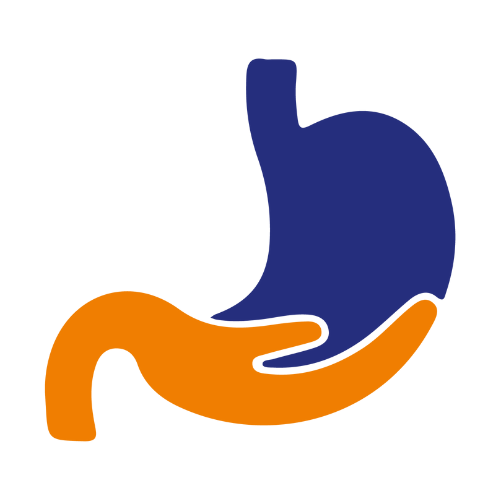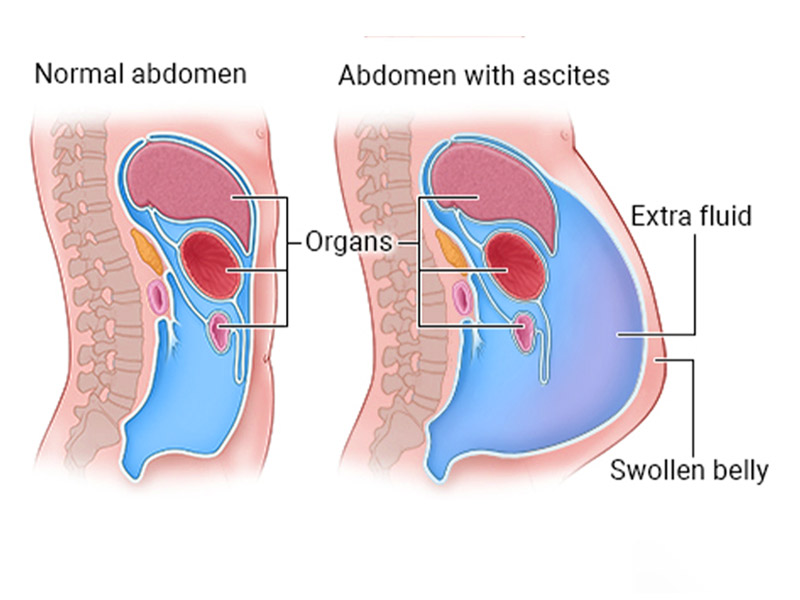Ascites
Ascites (ay-SITE-eez) is when too much fluid builds up in your abdomen (belly). This condition often happens in people who have cirrhosis (scarring) of the liver.
A sheet of tissue called the peritoneum covers the abdominal organs, including the stomach, bowels, liver and kidneys. The peritoneum has two layers. Ascites happens when fluid builds up between the two layers.
What are the Symptoms?
The main symptoms of ascites are a large belly and rapid weight gain.
Other symptoms include:
- Swelling in your ankles.
- Shortness of breath.
- Digestive issues, such as bloating, abdominal pain, loss of appetite, indigestion and constipation
- Back pain.
- Difficulty sitting.
- Fatigue.
What are the Causes?
Ascites results from high pressure in the blood vessels of the liver (portal hypertension) and low levels of a protein called albumin.
Diseases that can cause severe liver damage can lead to ascites. These include:
- Chronic hepatitis C or B infection
- Alcohol abuse over many years
- Fatty liver disease (non-alcoholic steatohepatitis or NASH)
- Cirrhosis caused by genetic diseases
People with certain cancers in the abdomen may develop ascites. These include cancer of the appendix, colon, ovaries, uterus, pancreas, and liver.
Other conditions that can cause this problem include:
- Clots in the veins of the liver (portal vein thrombosis)
- Congestive heart failure
- Pancreatitis
- Thickening and scarring of the sac-like covering of the heart (pericarditis)
- Kidney dialysis may also be linked to ascites.
How is it Diagnosed?
Your doctor will do a physical exam to determine if the swelling is likely due to fluid buildup in your belly.
You may also have the following tests to assess your liver and kidneys:
- 24-hour urine collection
- Electrolyte levels
- Kidney function tests
- Liver function tests
- Tests to measure the risk of bleeding and protein levels in the blood
- Urinalysis
- Abdominal ultrasound
- CT scan of the abdomen
- Your doctor may also use a thin needle to withdraw ascites fluid from your belly. The fluid is tested to look for the cause of ascites and to check if the fluid is infecte
What are the Risk Factor?
Complications may include:
- Spontaneous bacterial peritonitis (a life-threatening infection of the ascitic fluid)
- Hepatorenal syndrome (kidney failure)
- Weight loss and protein malnutrition
Mental confusion, change in the level of alertness, or coma (hepatic encephalopathy) - Bleeding from the upper or lower gastrointestinal tract
- Build-up of fluid in the space between your lungs and chest cavity (pleural effusion)
- Other complications of liver cirrhosis
How is it Treated?
The condition that causes ascites will be treated, if possible. Treatments for fluid build-up may include lifestyle changes:
- Avoiding alcohol
- Lowering salt in your diet (no more than 1,500 mg/day of sodium)
Limiting fluid intake
You may also get medicines from your doctor, including:
- “Water pills” (diuretics) to get rid of extra fluid
- Antibiotics for infections
Other things you can do to help take care of your liver disease are:
- Get vaccinated for diseases such as influenza, hepatitis A and hepatitis B, and pneumococcal pneumonia
- Talk to your doctor about all medicines you take, including herbs and supplements and over-the-counter medicines
Procedures that you may have are:
- Inserting a needle into the belly to remove large volumes of fluid (called a paracentesis)
- Placing a special tube or shunt inside your liver (TIPS) to repair blood flow to the liver
- People with end-stage liver disease may need a liver transplant.

